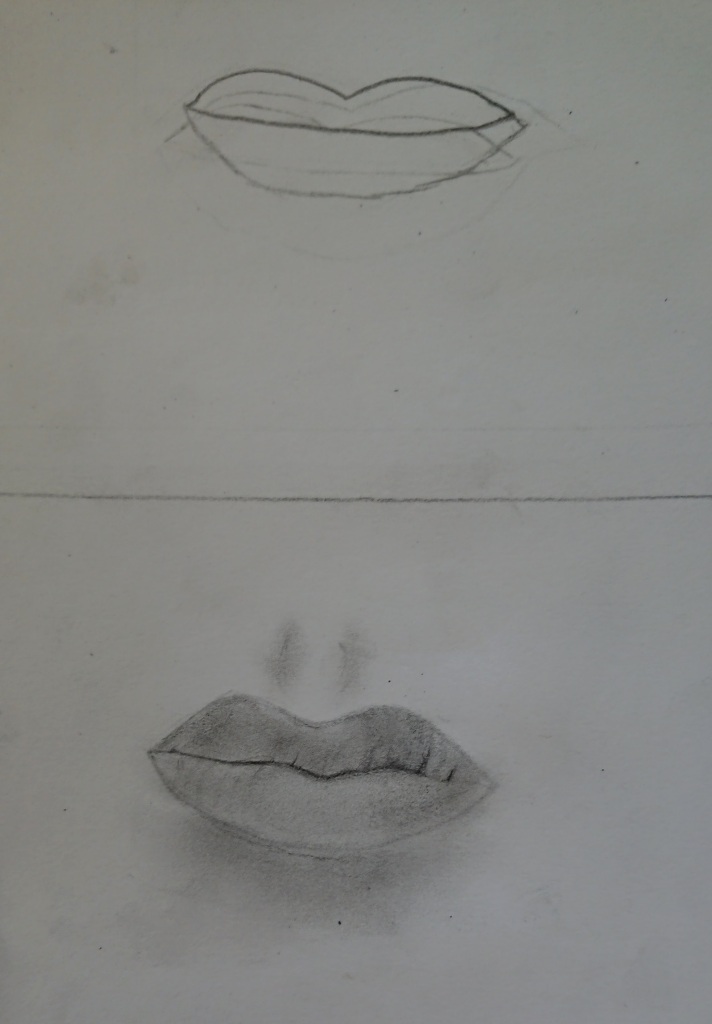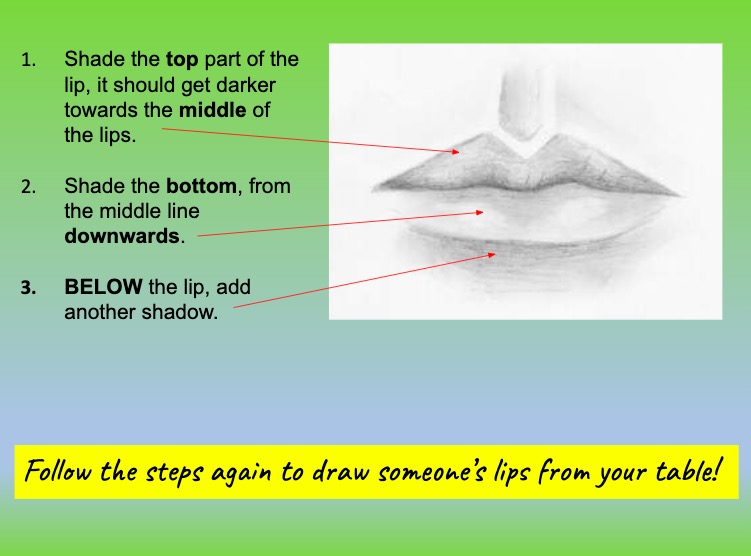This portraiture scheme of work is available on TES or TPT here. It is designed for art students with the intention of teaching students how to draw faces and understand the basics in portraiture. This portraiture art project teaches the basics of drawing portraits, showing how to draw individual features in the correct place and the correct size. There are step-by-step tutorial videos included in the presentation.

The portraiture drawing lessons were designed to show the art students how they might draw a face incorrectly and why, then show them how to address their mistakes using some basic guides and rules.
The outcomes were for students to be able to accurately place all of the features of the face in the correct place, understanding proportions, scale and creating some realism in their work through by adding tone. The scheme of work covers all of the basics in portraiture drawing, looking at eyes, ears, noses, mouths and hair. I teach this to my Year 7 classes and the results are good – though some find it very challenging, I post the videos online for them to watch between lessons.
I have found that this project is great for showing progress, and students enjoy it because there is some instant gratification! Which isn’t usually the case with drawing.
Get these Portraiture Art Lessons on TES here OR on TPT here.



Throughout this portraiture scheme of work showing how to draw faces, each lesson breaks down the stages of drawing different features of the face into small steps. There are a lot of examples (in various drawing styles) for students to aim for. I have tried to make the steps as clear as possible to show students exactly how to draw each facial feature.
I have also started to record the drawing steps and am using the videos in my lessons (to save time demonstrating each time) and also posting the videos for students to use/watch at home on their homework.

These lessons on how to draw faces also has six slides introducing a quick history of portraiture, famous faces in art and some context about self-portraits.
The series of drawing lessons is long enough to cover at least a half term of teaching (based on one hour per week at KS3) – however it can easily be adapted to be shorter or longer if necessary. I have tried to plan out the lessons so they run in a clear, natural order. Each lesson includes a starter activity or entry task, and homework tasks are set throughout.







After looking at how to draw the individual features of the face, the next part of the project looks at how to put them all together.

The drawing lessons include extensions and challenges for students to work on if they are ahead, and all of the resources can easily be altered. I have also tried to differentiate all of the learning steps as much as possible.
You can get this ‘KS3 Art Scheme of Work: Portraiture’ project in full on TES here OR on TPT here.
Here are some of the outcomes from my students, I was so pleased with the progress they made – what do you think? Let me know in the comments!






Your students have done a wonderful job! You can see the relentless effort they put into their work! I also applaud you for how well-rendered your portraits are.
Although my passion is drawing illustrations/cartoons because it enables me to be imaginative and there are no strict set of rules or guidelines compared to drawing portraits, I am thankful my art mentor compelled me to attempt different subject matters especially portraits. It forced me to train my eyes to draw what I see (realistically) with precision which honed my skills.
A lot of artists (no matter what level of experience) tend to avoid doing Portraits because of the amount of detail and guidelines it requires. But, I can honestly say a lot of my commission work are portraits lol. And I am thankful that my art mentor pushed me towards this subject matter along with others because it not only honed my skills, but it added versatility in my work!
LikeLiked by 1 person
Thanks for sharing! Usually after this project we do something more abstract 😊
LikeLike